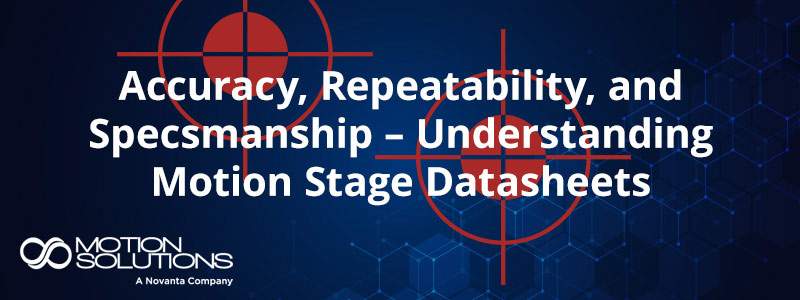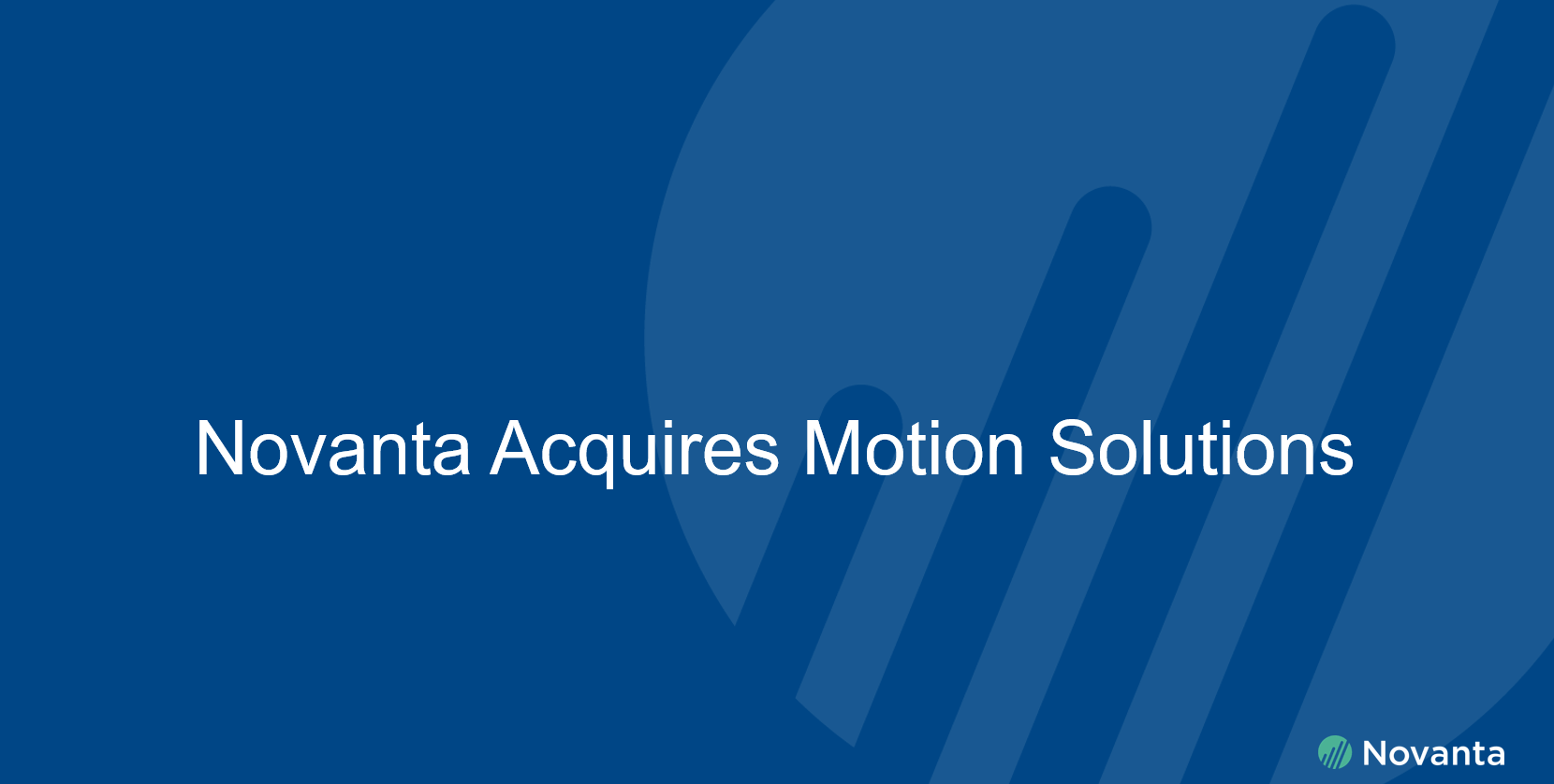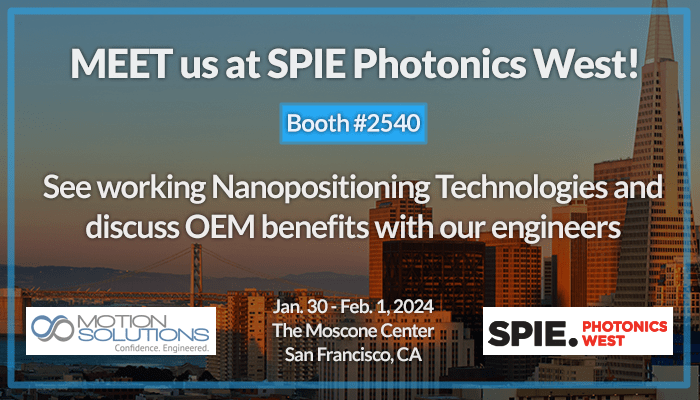The term position noise or resolution is a key measurement associated with piezo stages. This measurement is a determining factor of how small a step size can be achieved (the other being controller resolution). Please note that in a piezo flexure stage the limiting factors are different than other piezo motors or stick slip piezo devices that can be limited in the actual “step” or positioning movement of the device.
Position noise is the amplitude of the stage movement while maintaining position at a certain control-loop bandwidth. The control-loop bandwidth varies from stage to stage. A common bandwidth that nPoint uses to measure noise, is approximately 1/10th that the resonant frequency of the stage. This measure of this amplitude is commonly used to define the resolution of nanopositioners and it is typically dominated by the sensor noise. When interfacing with nPoint controllers via the analog input, it is necessary to be sure that the voltage command is not noisy so that you maintain the high resolution (low noise) capability of the nPoint nanopositioning system.
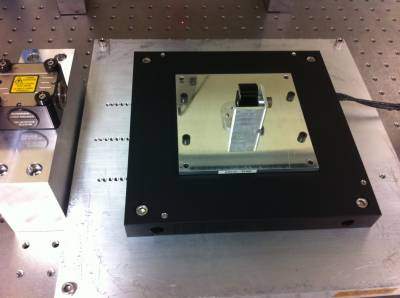
nPoint will measure noise during calibration of all systems to ensure they are within quoted specifications. Position noise is specified as RMS noise measured at the high voltage output to the piezo actuators while the system is in closed-loop. This measure maintains that when a system is in closed-loop the sensor and electronics will compensate for any change in position of the stage. Open-loop systems will have better resolution because the sensor noise and compensation is eliminated from the system. Electronics resolution and noise will often be the limiting factors in open-loop resolution.
When looking to achieve specified stage resolution be sure to look at the associated controller resolution. As an example consider a 100um travel range piezo stage. We will assume the sensor is not the limiting factor. A 16-bit controller can provide a 1.526nm resolution in a best case scenario for that stage. If you use a 20-bit controller the resolution will be 0.095nm as a limiting factor. If stage resolution is listed at 0.1nm and you are using a 16-bit controller the best possible step you can perform will be 1.526nm. This can also be seen when using a 16-bit DAQ card with a 20-bit controller. The DAQ in this case would limit the 100um stage to steps of 1.526nm.
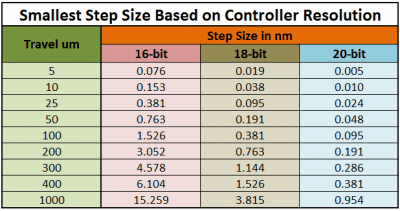
*Please note this is the best resolution that can be achieved based on controller only. Actual resolution varies by stage and sensor.


